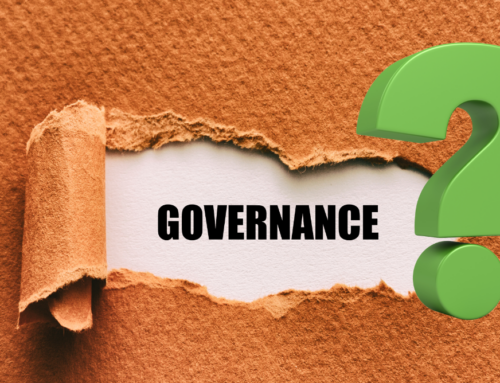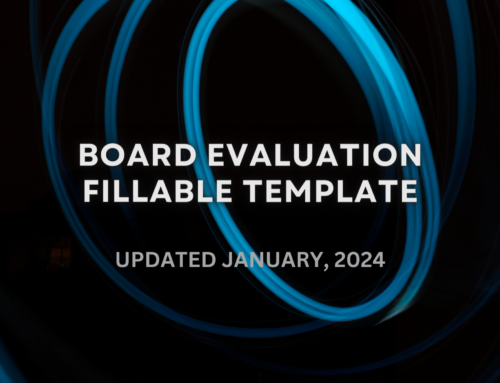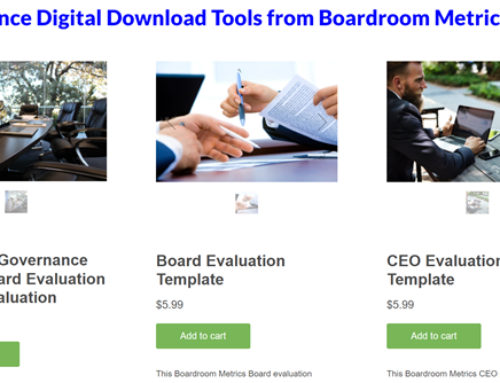Here are six Board evaluation tips and learning from Board evaluations conducted with public, private and not-for-profit organizations in North America.
- The majority of Boards over-rate their governance competency. They do this because:
-
- Directors want to be supportive of their Board – and each other. They are frequently reluctant to be fully objective about issues they see regarding the performance of the Board.
- Many written Board evaluations are too long. This results in box-ticking and lack of serious reflection by Directors.
- Many Board evaluation rating scales are too broad. This results in limited differentiation between the choices and too much concentration at the high end of the scale.
- And finally (and very frankly) – many Directors lack the knowledge and competency to evaluate their Board effectively. Governance expertise is not the reason most Directors are invited onto a Board.
How to help ensure Boards rate governance effectiveness properly:
During the Board evaluation, ask Directors to provide a rating; then ask them to back up their rating with specifics – for example, when we ask Directors to rate how well the Board understands its role we also ask each Director to define the Boards role. In every Board evaluation we find inconsistency in the responses. This lack of consistency is more insightful than the rating. Use this approach for almost every area of Board effectiveness. For example, the question ‘how well does the Board evaluate performance of the CEO?’ should be followed-up with ‘define the process the Board uses for evaluating the CEO’.
Also, the use of an outside governance expert is generally very helpful in objectively and expertly evaluating governance effectiveness.
2. Unfortunately, the most common outcome of a Board evaluation is nothing. One key reason for this is that over-rating Board effectiveness provides little incentive to fix anything. When everything is well-rated, it’s often not clear what, if anything, the Board should focus on to improve.
How to help ensure something happens after the Board evaluation:
First, do the evaluation properly. Don’t over-rate Board effectiveness. Second, identify the priority improvement areas, then develop and approve a plan for improvement. Assign roles (generally the Governance Committee has overall accountability). Agree tasks. Follow up at every Board meeting on progress.
3. Lack of clarity about the Board’s oversight role is a fundamental problem that almost all Boards face. When surveyed, very few Directors on the same Board provide a consistent definition of their governance role. This is a key reason that governance fails so often. Too often, Boards are focused on the wrong issues.
How to ensure Directors understand their governance role:
Spell it for them. During orientation and at every Board meeting. We believe the best, almost only way for Directors to understand the Board’s role is to keep it simple, like this: a governance Board’s role is oversight. There are three elements of this role: 1) identify risk 2) approve strategies for mitigating risks and achieving the organization’s mission 3) performance manage the CEO responsible for achieving the strategic goals.
4. Straying too far into operations is the fear that all Boards face. Somehow ‘nose in, fingers out’ has become a Board mantra. Unfortunately, it’s a mantra with few helpful clues on how to execute effectively.
How to live the ‘nose in, fingers out’ mantra:
By living the Board role. Focus on oversight. Nose into operations as necessary to identify risk and understand performance. Any direction on operations goes through the CEO and is usually agreed at planning time.
5. The primary risk most Boards focus on is financial. However, financial risk tends to increase AFTER legal, market and operating risks are already impacting the organization.
How to broaden the Board’s assessment of risk:
By analyzing all four key risk areas every organization faces – financial (like declining revenue); legal (like fraud); external (like a new competitor or Covid); internal (like a dangerous manufacturing process). We observe that most Boards need to spend more time on external and internal risks. We also observe that these risks play a consistent, high-profile role in governance and organization failures.
6. The composition of most Boards is poorly aligned with the risks and strategies their organizations are now facing. Common Board composition deficiencies include technology, cyber-risk, marketing and HR. Finance, legal and operations tend to be over-represented.
How to improve Board composition:
A first step in fixing Board composition is Board structure. Board structure is often a carry-over from the past. Common characteristics of an outdated Board include large size, focus on operations and Executive Committees. Executive committees are a key indicator that a Board is too large. They should be eliminated and the size of the Board should be reduced. Then, the Board should assess the skills and expertise of all Directors, ensuring each Director brings skills and expertise that are consistent with overseeing the risks and strategies of the organization.
A Board Evaluation Should Start with Understanding of Board Role
As discussed, most Boards and Directors struggle with understanding the Board’s oversight role. This is as true of large, high-profile organizations (eg, where the CEO is also the Board Chair) as it is of small underfunded not-for-profits (all volunteer). Since governance failure is common – much more common than most Directors realize – it’s important that Board evaluations accurately reflect the Board’s governance competency. Doing this is simple: START by evaluating how well the Board understands its role. Start by asking Directors to define two things:
- What the role of the Board is
- What their role as a Director is
Ensuring consistency amongst all Directors when answering these two questions is the key to governance effectiveness and an important outcome of any Board evaluation process.










Leave A Comment